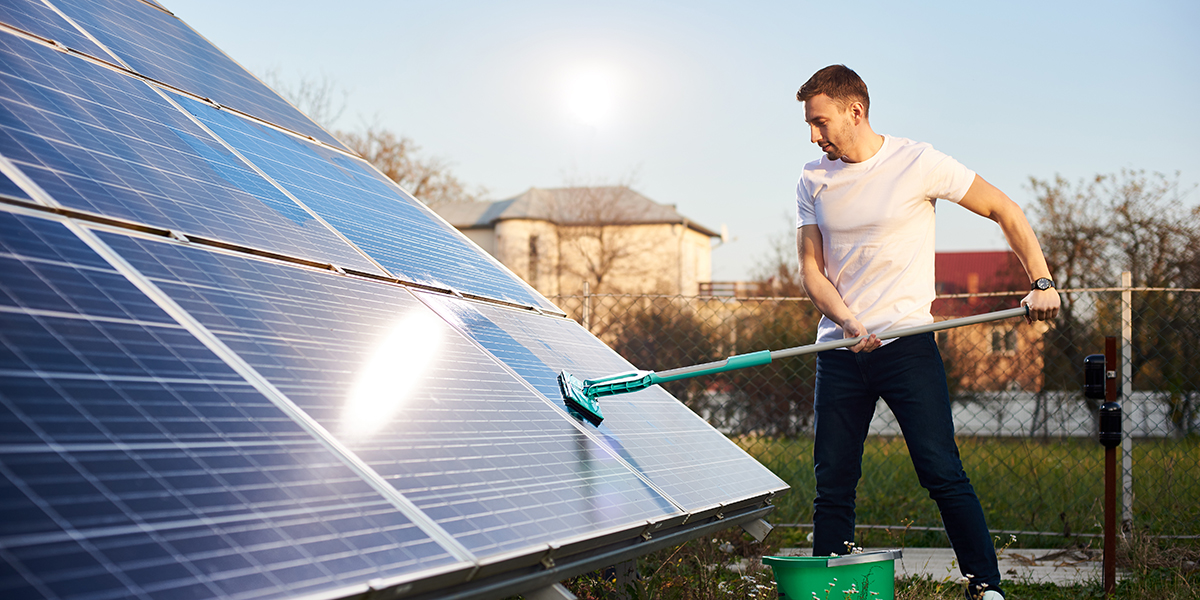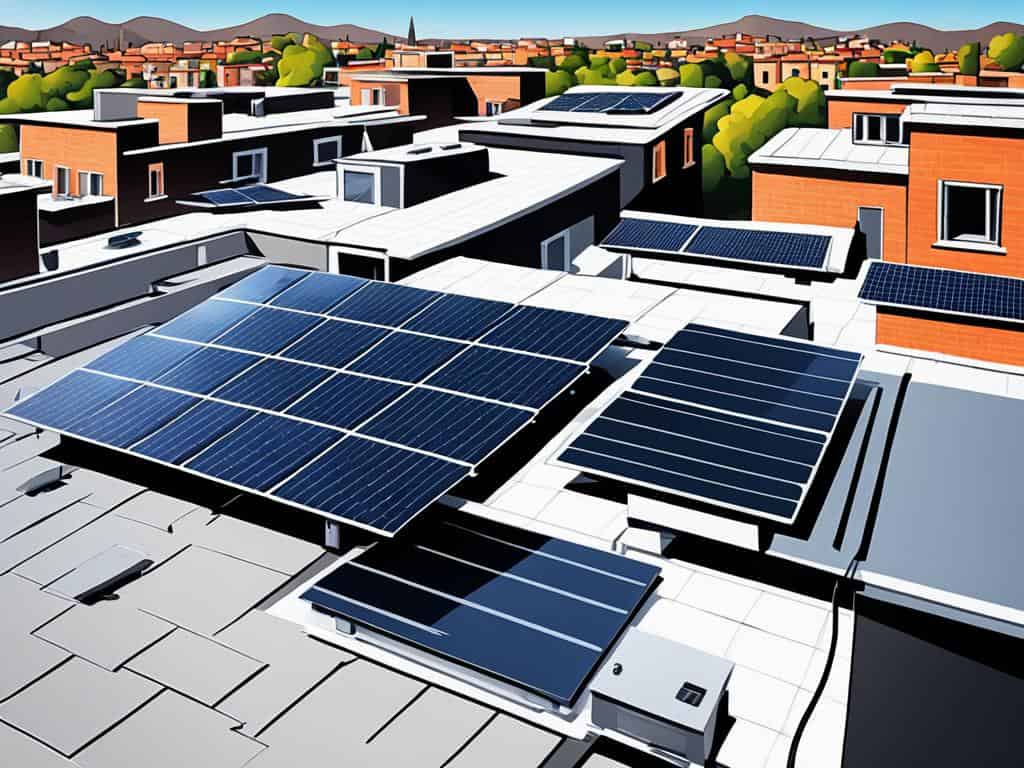Solar panels represent a long-term investment in renewable energy, and their efficiency is crucial to the return on that investment. However, to keep them operating at peak performance, regular cleaning is essential. The frequency of cleaning depends on a variety of factors, including location, weather patterns, and environmental conditions. Let’s delve deeper into how photovoltaic cells (PV cells), alternating current (AC), and direct current (DC) systems are affected by cleanliness, supported by quantifiable data to guide optimal cleaning schedules.

The Impact of Dust and Dirt on Photovoltaic Cells
The active photovoltaic cells are actually very sensitive to any external obstructions, such as dust, dirt, and organic matter, which block sunlight. This is a minimal layer of dust, according to various studies, that may reduce the efficiency of solar panels by 2-5%. The reduction in extreme conditions, for instance, would amount to bird droppings or thick layers of dirt-even to 20-30%.
For example, a farm in the Nevada desert recorded a 28% drop in the production of electricity within three months due to dust buildup. Where pollution and particulates are higher in the atmosphere, such as in towns and cities, yield from solar panels could drop by as much as 10 to 15% if not cleaned within 6 months. Based on environmental conditions, it is desirable to clean the photovoltaic cells once every 1 to 3 months.
Furthermore, research from one European solar power plant described how seasonal factors can also influence PV cell efficiency. For example, during spring and summer, efficiency drops up to 5% due to the accumulation of pollen and other organic materials on the panels. Thus, cleaning should be scheduled prior to the high-output summer months to maintain top performance.

Direct Current (DC) Systems and Their Cleaning Sensitivity
The energy produced by solar panels is in DC, and dirt really takes a big hit in the amount of DC energy output. When dust or grime covers the panels, sunlight cannot reach inside the photovoltaic cells, reducing their capacity to generate power. It is common that, on account of very frequent dust storms or construction, panels can lose as much as 20% of DC output if left uncleaned for as long as six months.
A practical example comes in the form of a study carried out in India, which found that solar installations in a semi-arid region experienced a 17% decline in DC output after just a couple of months owing to dust buildup. In coastal areas, the added challenge faced is that of salt spray. In Southern California, solar panel arrays near the coast realized a 15% increase in output when cleaned every three months compared to having them for a whole year.
By the numbers, a typical 5 kW DC system in a moderately dusty environment would lose 300 to 500 kWh of annual production, which can correspond to an economic loss from $60 to $100 due to locality-based electricity rates.
The Effect of Cleanliness on AC Conversion Efficiency
While solar panels generate direct current, the generation of DC requires conversion to AC in most residential and commercial systems to match grid requirements. Inverters are required to affect this conversion, and the efficiency of such conversion is also affected by how much dirt the panels have on them. The filthier the panels are, the less DC electricity they generate; after inversion, there will be lower AC output.
Under ideal conditions, an inverter might work at 97% efficiency. Under dirty solar panel conditions, the general AC efficiency of the entire system may go as low as 90%. In one study done in Arizona, it was found that due to dust and debris accumulated on the solar installation panels, there was an 8% fall in AC conversion efficiency for a 6 kW system. The estimated loss was cited at 500 kWh energy loss in a year.
For residential systems, a typical 6 kW AC system can lose between $70 and $120 in potential savings annually if the panels are not cleaned twice a year. Meanwhile, larger commercial systems lose thousands of dollars in missed savings, depending on the size and scope of the installation.
Weather Conditions and Their Influence on Cleaning Frequency
The frequency of cleaning depends much on weather conditions. For example, in some regions that experience heavy rainfall, such as the Pacific Northwest, rainwater can take care of all dirt and other kinds of elements, thus reducing the need for more frequent cleaning by hand. In regions that are dry or arid-inland or deserts, for example-solar panels will act like dust and sand magnets.
In fact, in Saudi Arabia, panels exposed to the desert environment may face losses of up to 40% efficiency after a major dust storm. Solar panels in these areas really need cleaning every 1-2 months in order to avoid huge losses in efficiency. On the other hand, locations with more moderate climates may only need their solar panels cleaned twice a year, particularly in spring when pollen is everywhere.
Sometimes extreme weather events-even wildfires-potentially influence cleaning needs. In the 2020 wildfire season in California, those panels specifically smothered with ash saw a 30% drop in efficiency, which eventually persuaded several owners and businesses to invest in emergency cleaning services. In such instances, unplanned cleaning becomes a must to return the panels to full capacity.
Economic Considerations for Regular Solar Panel Cleaning
The financial aspect of regular cleaning of solar panels is one of the most important aspects for a residential user or large-scale farms. Generally, cleaning services range from $150 to $400 for an average-sized residential solar system. This is often outweighed by the savings on energy output, mostly considering this as a factor over time.
As an example, a residential 10 kW system may generate an extra 700-1000 kWh per year if cleaned once every six months, which could save approximately $150-$200 annually, given the average cost of electricity. Commercial solar farms with systems over 1 MW have similarly realized a gain in output of about 5-7% after quarterly cleaning, translating to an added income amounting to several thousands of dollars.
Many operators attempt to clean as cost-effectively as possible by using a monitoring system that displays energy output in real-time and allows for precise scheduling of cleaning services when drops in efficiency become significant. Indeed, some companies are using robotic cleaning systems for large-scale installations as a means of trying to reduce labor costs while keeping panels clean with no need for frequent manual intervention.
In other words, the question of periodic cleaning of solar panels should be based on a mixture of environmental factors, system size, and economic considerations. All in all, quantification of possible energy losses allows owners to weigh them against cleaning costs and optimize their energy output to economic returns.



